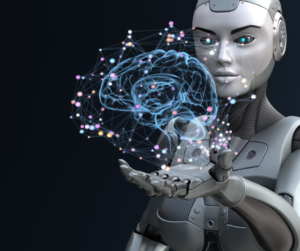When Gobel Group first developed its approach to help nonprofits harness AI and Big Data to fund their missions, we faced a problem we didn’t expect: “What do we call our algorithm?” It turns out catchy names don’t come so naturally to an expert team of data scientists. We decided to keep it simple, basing our moniker on our revolutionary approach to fundraising — turning gratitude into giving.

Voila, the Gratitude to Give (G2G) algorithm was born.
When it comes to increasing donations, there’s another important question non-profit organizations should ask: “How might we increase feelings of gratitude?” (We are aware this question may come as a surprise to many nonprofits. After all, their fundraising model typically relies on a different metric: wealth data.) Moreover, the transition to finding one’s tribe — the people who most resonate with the mission and feel gratitude towards the organization — isn’t always easy for stakeholders to accept. However, when we share key data insights, like the fact that wealth data has been shown to only predict about 10% of charitable giving, it often confirms their own experiences.
It turns out, the widely held belief wealth leads to altruism is a myth. Yes, huge donations by the mega-rich draw headlines, but they aren’t moving the philanthropic needle much. Charitable giving by both foundations and individuals increased in 2020 and bumped up the 2019 statistic that giving made up 2.1% of the GDP, but it’s unclear at this point if that trend will continue.
If wealth isn’t the source of altruism, what is? Philosophers as far back as Aristotle understood gratitude and emotional resonance with a group, school, or any other nonprofit is what drives donations, whether the individual is rich or poor.
So, how might we better understand gratitude? Psychology Today defines it as, “an affirmation of the goodness in one’s life and the recognition that the sources of this goodness lie at least partially outside the self.” It is the recognition others have helped us or positively impacted our lives, leading us to resonate more with a group or cause — to the point we put our money where our hearts are.
Increasing this sense of gratitude can be a major win for other reasons. On the individual level, feeling appreciation is a strong positive for emotional and psychological health. Gratitude makes us kinder in every sense of the word. As UC Berkeley notes, “grateful people are less selfish and show greater empathy toward others, in general.”
Certainly, gratitude’s role in giving is a constant force. But what drives gratitude varies dramatically between nonprofits. Even when comparing two similar institutions, such as dual universities, the factors possessing greater influence on the community’s sense of appreciation can vary to a great degree.
Using the example of university students, their emotional bond with their school may be based on attending a class taught by a world-renowned professor, or their involvement in clubs. Or it may be something as simple as how lenient the university’s parking enforcement officers were with students rushing to reach class on time.
No matter what specific activities cultivate similar grateful feelings towards your organization, Gobel Group can help you measure resonance using customized algorithms incorporating thousands of variables. We can determine what factors play a role on how grateful a nonprofit’s community is, and identify what individuals are likely to make a gift to achieve its goals. Without this data, a nonprofit is just taking a shot in the dark — or still relying on wealth data.
If you are ready to learn what drives gratitude for your organization and increase charitable gifts by a multiple of 4x in the process, click here to schedule a 15-minute call. Together, we can unlock the potential for greater giving using the technological wonders of AI and Big Data.
